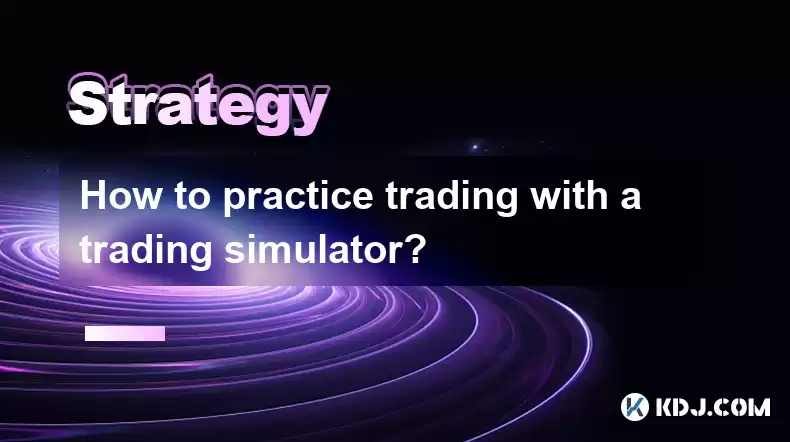-
 Bitcoin
Bitcoin $118400
1.64% -
 Ethereum
Ethereum $4210
-1.74% -
 XRP
XRP $3.175
-2.25% -
 Tether USDt
Tether USDt $1.000
0.00% -
 BNB
BNB $800.7
-0.18% -
 Solana
Solana $183.2
1.19% -
 USDC
USDC $0.9998
0.00% -
 Dogecoin
Dogecoin $0.2319
-4.30% -
 TRON
TRON $0.3388
1.11% -
 Cardano
Cardano $0.7951
-1.77% -
 Hyperliquid
Hyperliquid $44.76
1.61% -
 Chainlink
Chainlink $21.93
2.82% -
 Stellar
Stellar $0.4409
-1.92% -
 Sui
Sui $3.828
-2.37% -
 Bitcoin Cash
Bitcoin Cash $568.3
-0.57% -
 Hedera
Hedera $0.2561
-2.80% -
 Ethena USDe
Ethena USDe $1.001
-0.02% -
 Avalanche
Avalanche $23.63
-3.68% -
 Litecoin
Litecoin $124.0
1.80% -
 Toncoin
Toncoin $3.317
-2.74% -
 UNUS SED LEO
UNUS SED LEO $9.029
0.34% -
 Shiba Inu
Shiba Inu $0.00001349
-2.54% -
 Uniswap
Uniswap $10.85
-1.44% -
 Polkadot
Polkadot $4.025
-2.41% -
 Dai
Dai $1.000
0.01% -
 Cronos
Cronos $0.1619
2.41% -
 Ethena
Ethena $0.7756
4.12% -
 Bitget Token
Bitget Token $4.437
-1.70% -
 Pepe
Pepe $0.00001194
-3.82% -
 Monero
Monero $267.3
-2.17%
How to practice trading with a trading simulator?
To hone your trading skills, practice on a trading simulator by exploring platform features, creating a strategy, backtesting it, simulating scenarios, and analyzing results to refine your approach.
Feb 25, 2025 at 04:12 am

Key Points:
- Familiarize yourself with the trading platform and its features
- Create a trading plan and stick to it
- Backtest your strategies thoroughly
- Simulate different market scenarios
- Analyze your results and make adjustments
How to Practice Trading with a Trading Simulator
Step 1: Familiarize Yourself with the Trading Platform and Its Features
- Choose a trading simulator that provides realistic market simulations and a comprehensive range of features.
- Explore the platform's interface, including order types, charting tools, and risk management tools.
- Understand the different settings and parameters that can be customized to tailor the simulation to your specific needs.
Step 2: Create a Trading Plan and Stick to It
- Define your trading strategy, including entry and exit points, risk parameters, and position sizing.
- Establish clear rules for trade execution and money management.
- Avoid emotional trading and adhere to your plan even when the market moves against you.
Step 3: Backtest Your Strategies Thoroughly
- Import historical data into the trading simulator and run your strategy over multiple periods and market conditions.
- Evaluate the performance of your strategy in different market scenarios, including bull and bear markets, high and low volatility environments.
- Identify areas for improvement and make adjustments to your strategy accordingly.
Step 4: Simulate Different Market Scenarios
- Create custom market scenarios to test your strategy under extreme or unusual conditions.
- Simulate different types of orders, such as limit orders, market orders, and stop-loss orders.
- Experiment with different execution strategies to optimize your trade execution efficiency.
Step 5: Analyze Your Results and Make Adjustments
- Review your trading logs and performance metrics, including win rate, profit factor, and Sharpe ratio.
- Identify areas where your strategy excels and where it needs improvement.
- Make adjustments to your strategy based on your analysis and the feedback from the trading simulator.
FAQs
Q: What is the best trading simulator for beginners?
A: There are several beginner-friendly trading simulators available, including TradingView, Thinkorswim, and MetaTrader 5. These simulators provide user-friendly interfaces, comprehensive charting tools, and various educational resources.
Q: Can I use real money in a trading simulator?
A: No, trading simulators use virtual funds and do not allow you to risk real money. This allows you to practice and refine your strategies without financial risk.
Q: How long should I practice with a trading simulator before starting to trade live?
A: The amount of time needed for simulator practice varies among individuals. However, it is recommended to spend several months practicing and gaining experience before risking real money.
Q: What is the typical profit factor for a successful trading strategy?
A: A profit factor above 1.5 is generally considered to be a reliable indicator of a profitable trading strategy. This means that for every $1 of risk, the strategy profits $1.50 or more on average over a significant sample size.
Q: How do I find an experienced trader to mentor my trading journey?
A: Attend industry events, join online trading communities, and consider reaching out to traders you respect through social media or networking sites. Look for experienced traders with a proven track record and a willingness to share their knowledge.
Disclaimer:info@kdj.com
The information provided is not trading advice. kdj.com does not assume any responsibility for any investments made based on the information provided in this article. Cryptocurrencies are highly volatile and it is highly recommended that you invest with caution after thorough research!
If you believe that the content used on this website infringes your copyright, please contact us immediately (info@kdj.com) and we will delete it promptly.
- LYNO AI & XRP: Decoding the ROI Potential in a Shifting Crypto Landscape
- 2025-08-11 04:30:11
- Cryptos on the Cusp: Cold Wallet, Price Breakouts, and What's Hot Now
- 2025-08-11 04:50:11
- Dogecoin, Meme Coins, and Remittix Utility: What's the Hype?
- 2025-08-11 04:50:11
- Sky Bet, ESPN, and the Spartans Bonus: A Betting Landscape Overview
- 2025-08-11 05:11:16
- Altcoin Buyouts & Market Removals: Crypto Development's Wild Ride
- 2025-08-11 04:30:11
- Bitcoin Banks Arrive: El Salvador's Bold Play with Investment Banks and Crypto
- 2025-08-11 04:55:12
Related knowledge

How to use stop-loss orders to limit potential losses?
Aug 08,2025 at 02:01pm
Understanding Stop-Loss Orders in Cryptocurrency TradingA stop-loss order is a risk management tool used by traders to automatically sell a cryptocurr...

What are the most promising altcoins to invest in?
Aug 10,2025 at 11:42am
Understanding the Role of Private Keys in Cryptocurrency WalletsIn the world of cryptocurrency, private keys are the cornerstone of ownership and cont...

How to read cryptocurrency charts and use technical analysis?
Aug 08,2025 at 11:08am
Understanding the Basics of Cryptocurrency ChartsCryptocurrency charts are graphical representations of price movements over time. These charts are es...

What is the difference between long-term holding (HODLing) and short-term trading?
Aug 10,2025 at 05:30pm
Understanding HODLing in the Cryptocurrency SpaceThe term HODL originated from a typo in a 2013 Bitcoin forum post and has since become a widely accep...

How to do your own research (DYOR) before investing in a crypto project?
Aug 08,2025 at 09:07pm
Understanding the Core Principles of DYOR in CryptocurrencyEngaging in due diligence before investing in any cryptocurrency project is essential to mi...

How to build a diversified crypto portfolio?
Aug 09,2025 at 12:21pm
Understanding the Importance of Diversification in CryptoDiversification in the cryptocurrency space is a strategy used to reduce risk by spreading in...

How to use stop-loss orders to limit potential losses?
Aug 08,2025 at 02:01pm
Understanding Stop-Loss Orders in Cryptocurrency TradingA stop-loss order is a risk management tool used by traders to automatically sell a cryptocurr...

What are the most promising altcoins to invest in?
Aug 10,2025 at 11:42am
Understanding the Role of Private Keys in Cryptocurrency WalletsIn the world of cryptocurrency, private keys are the cornerstone of ownership and cont...

How to read cryptocurrency charts and use technical analysis?
Aug 08,2025 at 11:08am
Understanding the Basics of Cryptocurrency ChartsCryptocurrency charts are graphical representations of price movements over time. These charts are es...

What is the difference between long-term holding (HODLing) and short-term trading?
Aug 10,2025 at 05:30pm
Understanding HODLing in the Cryptocurrency SpaceThe term HODL originated from a typo in a 2013 Bitcoin forum post and has since become a widely accep...

How to do your own research (DYOR) before investing in a crypto project?
Aug 08,2025 at 09:07pm
Understanding the Core Principles of DYOR in CryptocurrencyEngaging in due diligence before investing in any cryptocurrency project is essential to mi...

How to build a diversified crypto portfolio?
Aug 09,2025 at 12:21pm
Understanding the Importance of Diversification in CryptoDiversification in the cryptocurrency space is a strategy used to reduce risk by spreading in...
See all articles

























































































